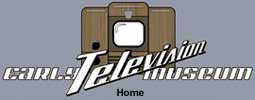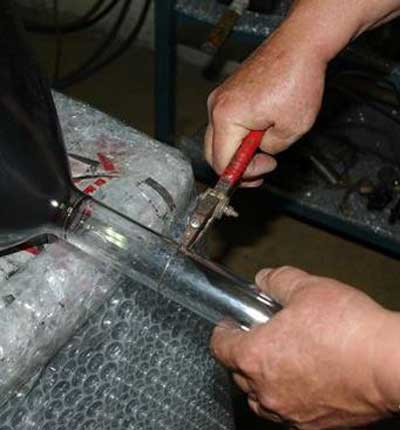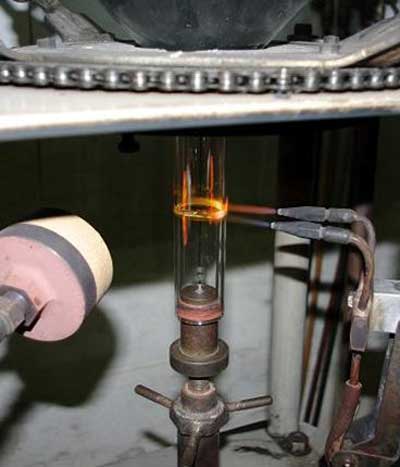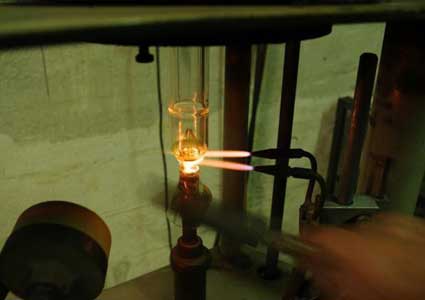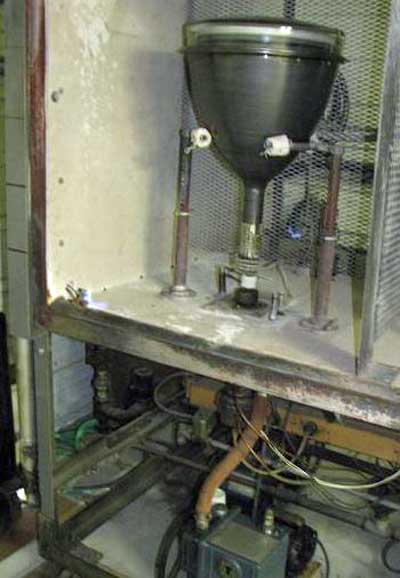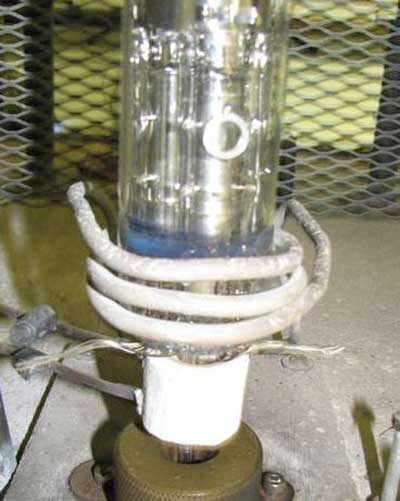Early Television CRT RebuildingIn the 1950s and 60s, hundreds of companies rebuilt picture tubes. At that time tubes failed frequently, and rebuilding was an inexpensive alternative to buying a new one. Today picture tubes outlast the average TV set, and only a few companies still rebuild them. Here is a brief description of the process: 1. The outside of the tube is carefuly cleaned, removing any labels and aquadag. 2. The neck of the CRT is cut off near the shell of the tube.
3. If a replacement gun is not available, the old one must be rebuilt by inserting a new filament and cathode. The gun is then attached to a glass "stem", which contains the wire leads and a small protruding tube used to evacuate the CRT. Another approach is to use a new gun. 4. A glass extension tube is fused to the CRT neck.
5. The stem (with the gun attached) is fused inside the extension tube. Then the tube is cut off at the stem.
6. A vacuum pump is attached to the stem, and air is removed. When as much air as possible has been removed, the tube is heated to about 750 degrees F. This process causes the remaining air molecules to move very rapidly, increasing the likelihood that they will end up in the stem, where the vacuum pump can remove them.
7. The tube on the stem is then crimped to seal the CRT. 8. There will be remaining molecules of gasses in the tube which must be removed. Barium is used for this purpose. The "getter", which is attached to the gun, is "flashed" to remove the remaining gas. This is done using an RF induction heater.
9. A high voltage is applied to the anode and filaments of the tube to prevent future arcing. 10. The cathode is activated by applying different filament voltages for a period of time. 11. The base is installed, soldering the wires coming out of the gun and using silicone adhesive. 12. The tube is tested for emission and shorts.
|
